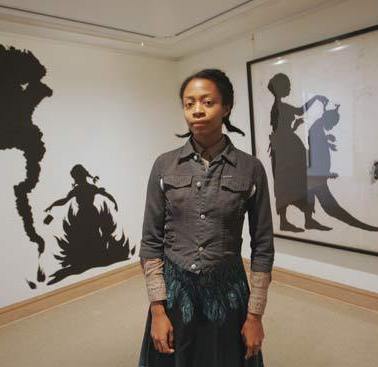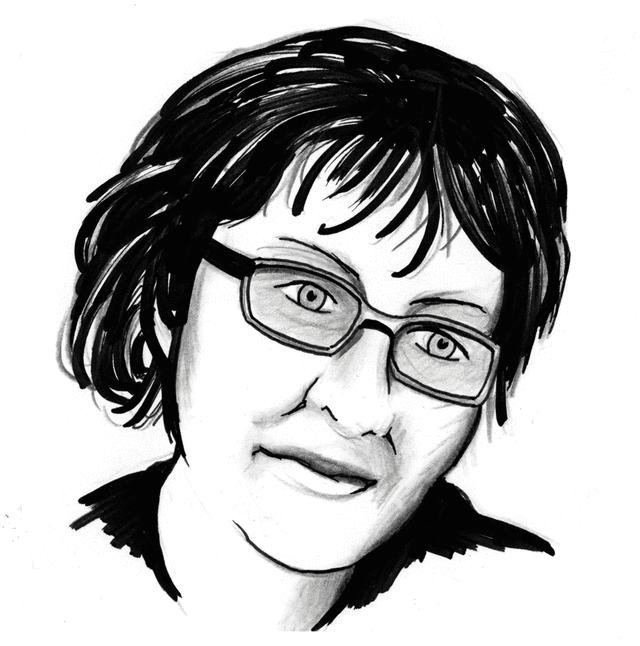Artist Talk: Kara Walker

Ever since her first exhibition at the Drawing Center in 1994, the artist Kara Walker has been a lightening rod for controversy over her often graphic silhouettes, prints, and films exploring race, sexuality, slavery, and violence. We'll be running a review of her gripping yet troubling solo show at Reed College's Cooley Gallery, called More & Less, next week, but we wanted to let you know Walker will be giving a free talk on Tuesday, October 2 at 7pm at Reed's Vollum Lecture Hall with a reception afterward. Given she's one of the most provocative artists working today, this will be a talk not to miss.
For some background on the show, below is a profile we ran in our September issue's Fall Arts Preview of the gallery's curator, Stephanie Snyder, and the owner of the collection, Jordan Schnitzer.
JORDAN SCHNITZER | THE COLLECTOR
STEPHANIE SNYDER | THE CURATOR

Stephanie Snyder: The Curator
Image: Dan Gay
When Stephanie Snyder hung Kara Walker’s paper cutout The Humane Acquisition of Chitlins at the Cooley Gallery in 2008, she recalls getting “an earful” about the artist’s send-ups of antebellum black-white relations, not from students, faculty, or the public, but from one of the other artists in the show: Faith Ringgold.
One of the grandmothers of black feminist art, Ringgold is hardly the only African American artist of her generation to find Walker’s work, which has hung in solo exhibitions at major museums around the world, discomfiting. Artist Betye Saar bluntly called it “revolting” in the hundreds of letters she sent to institutions nationwide in an attempt to stop the showing of Walker’s art.
Undeterred, Snyder is now presenting an entire show of Walker’s prints, maquettes, and a new film, Fall Frum Grace, Miss Pipi’s Blue Tale. But no less surprising than Ringgold’s ire last time is the enthusiasm for the art in this show from the local collector lending most of it: Jordan Schnitzer.

Jordan Schnitzer: The Collector
Image: Dan Gay
“[Walker] takes this elementary form,” Schnitzer says, recalling the similar cutouts he made as a child, “and puts the most intense images in our face. There’s nowhere to go from her work: she makes us deal with this history.”
Snyder plans to steer clear of the most notorious of Walker’s images, in which she brutally and exuberantly sexualizes (and often recasts) the power dynamics between slave and master. Instead, the show will focus, Snyder says, on “the more intimate dialogue her work has with history”—the prints riffing on Harper’s Pictorial History of the Civil War and the film on 19th-century dioramas and vaudeville. She knew nothing of Schnitzer’s interest until Walker’s New York gallery told her about the “Portland collector who owns not only editions of all of Walker’s prints, but the only two series of steel cutouts she has made”—precisely the work Snyder wanted to accompany the film. “I’ve never heard Jordan speak so richly about an artist’s work before,” she recalls of her first meeting with him about the show.
Walker will lecture on October 2, and Snyder is working with Reed’s new VP for institutional diversity, the poet Crystal Williams, to develop programming for both a campus and a city that have had uneasy race relations.
“We want to be careful and circumspect about the show’s contents,” Snyder says. “We also hope to have serious conversation.” —Randy Gragg




